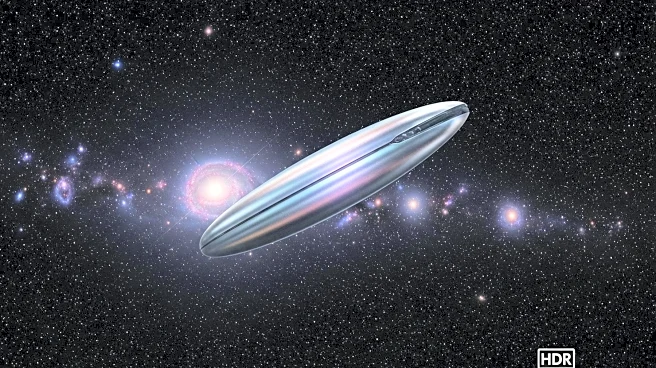What's Happening?
NASA's Perseverance rover has made a significant discovery on Mars, investigating a rock outcrop named Bright Angel on the edge of Jezero Crater. The outcrop features light-toned rocks with mineral nodules and multicolored splotches. Using data from five scientific instruments, scientists suggest these nodules may have formed through processes involving microorganisms. While not direct evidence of life, this finding is compelling and warrants further investigation. The rover's instruments, including cameras and spectrometers, have provided detailed analyses of the rock formations, revealing signs of water and organic molecules, which are essential for life.
Why It's Important?
This discovery is crucial as it adds to the growing body of evidence that Mars may have once harbored life. The presence of water and organic molecules in the rock formations suggests that the planet had conditions suitable for life. This finding could influence future Mars exploration missions and the search for extraterrestrial life. The research underscores the importance of continued investment in space exploration, as it could lead to groundbreaking discoveries about the universe and our place within it.
What's Next?
Perseverance has collected rock core samples from the site, which are planned to be returned to Earth for more detailed analysis. This sample return mission is critical for confirming the presence of past life on Mars. However, the future of such missions is uncertain due to proposed budget cuts to NASA's science funding. These cuts could impact ongoing missions and future plans, including the Mars sample return campaign.










